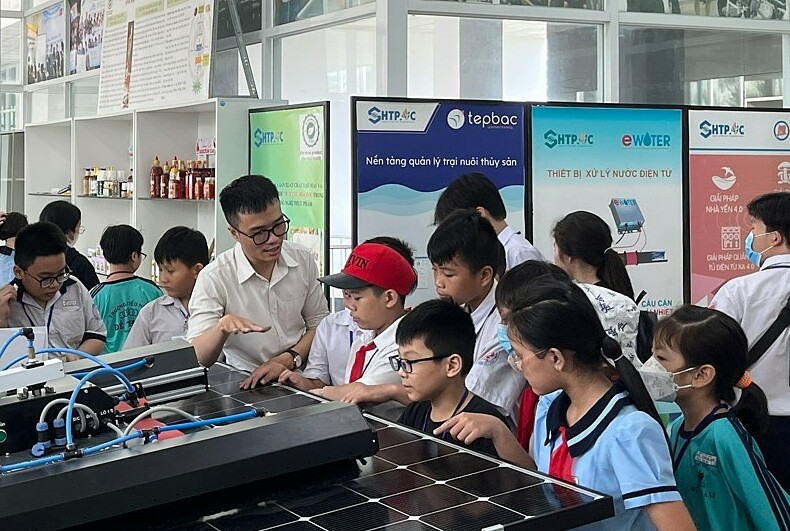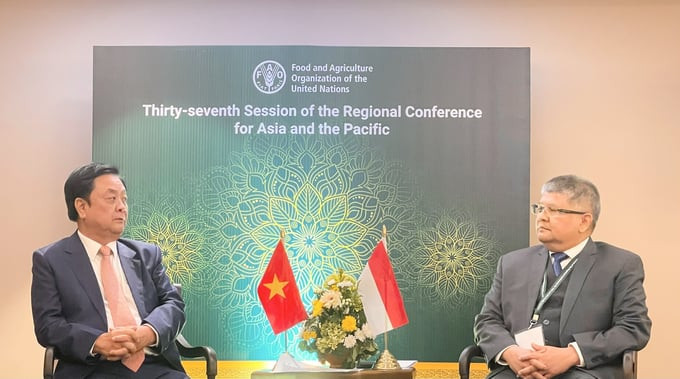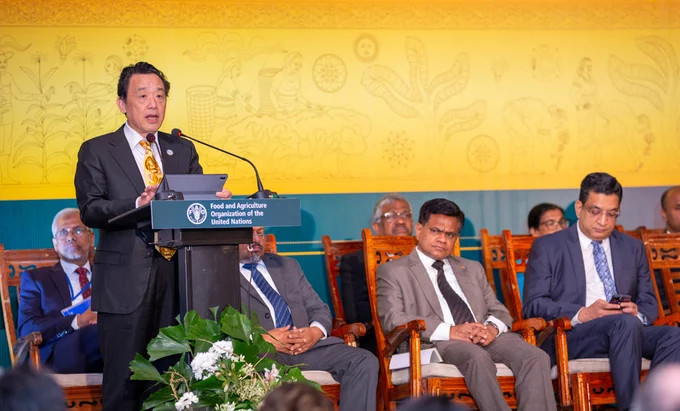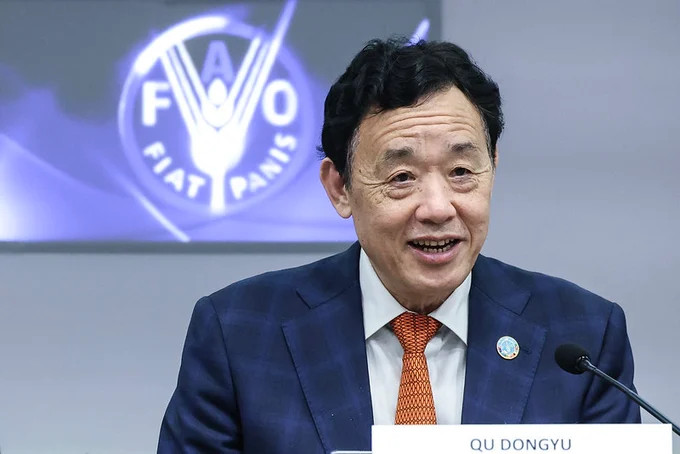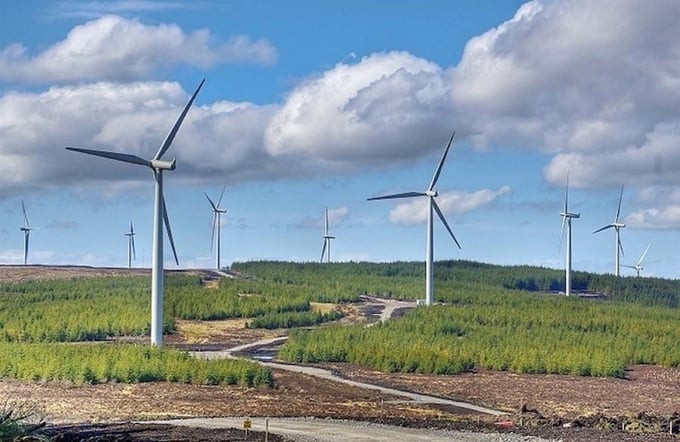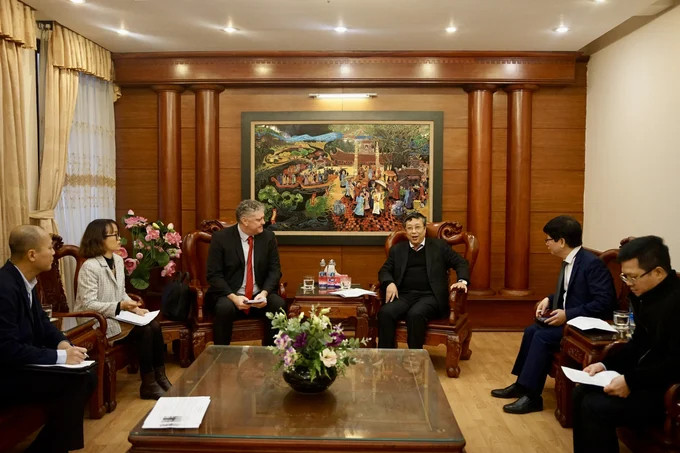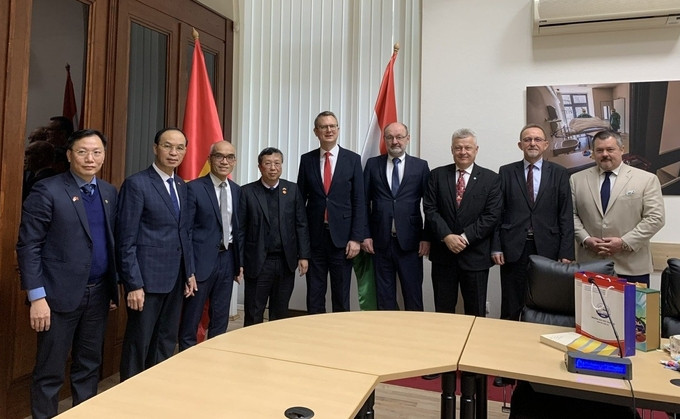(Dan Tri) - Impressive, record, surpassing, fastest in the world... Those are the words used by experts and the media to represent the most vividly the "picture" of the Vietnamese economy. South 2018. With a growth rate of 7.08%, Vietnam's economy recorded special "marks" after more than a decade. In the first working day of the new year 2019, Deputy Prime Minister Vuong Dinh Hue shared about this topic with PV Dan Tri.
Not only GDP increased...
In 2018, the trade war between major countries and major economies had complicated developments, the trend of increasing trade protectionism, along with the US Federal Reserve (FED) 4 times in a row. interest rates increased, the dollar appreciated, medium and long-term interest rates in the world market increased, which affected production and exports of countries, including Vietnam.
With the motto "Discipline, integrity, action, creativity, efficiency", the Government has led and drastically directed the ministries, branches and localities to focus on synchronously and effectively implementing the objectives. tasks and solutions in the Resolutions of the Party, National Assembly and Government. At the end of 2018, Vietnam's economy and society had positive changes, especially the gross domestic product (GDP) reached a "record" of 7.08%.
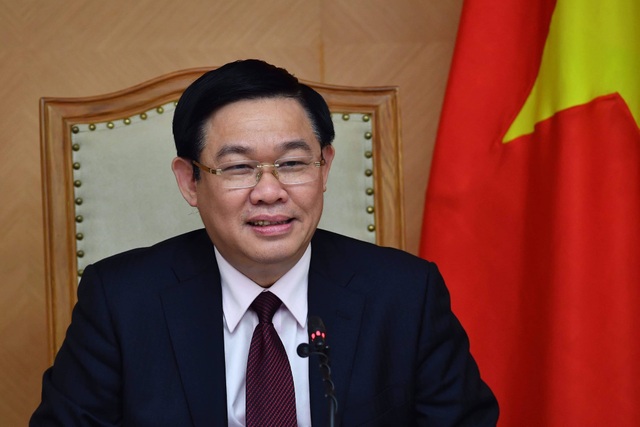
Deputy Prime Minister Vuong Dinh Hue
Talking to Reporter Dan Tri, Deputy Prime Minister Vuong Dinh Hue said: “After 11 years, Vietnam has achieved economic growth of 7.08%, far exceeding the target assigned by the National Assembly of 6.7%. . This is the result of the drastic management of the Government and the Prime Minister and the efforts of all levels, sectors, localities, the business community, and each worker and farmer."
According to the Deputy Prime Minister, economic growth in 2018 is characterized by being comprehensive in both "supply" and "demand", in which "supply" is comprehensive in 3 fields of agricultural production, construction industry and service. service. The main driver of growth in 2018 was the processing, manufacturing and service industries, in which the manufacturing industry increased very strongly (12.98%); services increased by 7.03%. Services increased in both wholesale sectors (up 8.51%), retail purchasing power increased by 11.7% - a rare double-digit increase due to good domestic demand, financial and banking sectors. , insurance increased by 8.21% and catering and accommodation services; transportation, warehousing... all achieved good growth.
In particular, if the driving force of growth in 2017 is the processing and manufacturing industry, the factor that makes 2018's growth higher than that of 2017 is the mining industry and agriculture. The evidence is that agricultural production increased by 3.76% - this is the highest increase in the period 2012 - 2018; Mining industry in 2017 decreased by 7.16%, in 2018 the rate of decrease was less at 3.11%. The slow decline of the mining industry and the record growth rate of agriculture are the two factors that made economic growth in 2018 higher than the set target.
“Thanks to that, the economic scale of this year is 5.5 million billion VND, equivalent to 240.5 billion USD, an increase of 1.3 times compared to 2015. The per capita income is approximately 2,600 USD/person. /year, an increase of nearly 200 USD compared to last year” - Deputy Prime Minister said.
... but also improve the quality of growth
Talking about the quality of economic growth in 2018, Deputy Prime Minister Vuong Dinh Hue affirmed: "In 2018, Vietnam's economy not only grew at a high rate, but had a good trend thanks to a significant improvement in productivity and quality. , labor efficiency; The competitiveness of the economy continues to be enhanced.
To demonstrate the above assessment, Deputy Prime Minister Vuong Dinh Hue mentioned an important factor that is the contribution rate of total factor productivity (TFP) in GDP growth. According to the Deputy Prime Minister, the TFP target of the 5-year plan is set at 30-35%, but in 2018 alone, it reached 40.23%, while the whole period of 2011 - 2015 TFP's contribution was only 33 percent. ,58%.
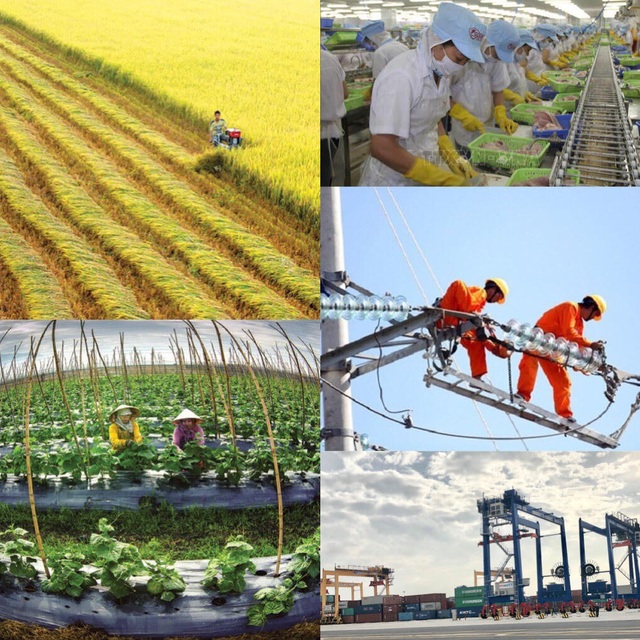
In 2018, Vietnam's economy and society had positive changes, especially GDP reached a "record" level of 7.08%.
For further evidence, Deputy Prime Minister Vuong Dinh Hue gave credit indicators. “In 2016, to have 1% GDP growth, 2.94% credit growth is needed; In 2017, this index dropped to 2.68%. In 2018, it is estimated that total credit growth as updated by the State Bank is about 14%, with a growth rate of 7.08%, the required credit growth index for 1% of GDP growth is only 2. ,first%".
"On the other hand, disbursement of public investment is slow but growth is still high. Obviously, the quality of economic growth in 2018 is undeniable, Vietnam's economic growth is no longer dependent on capital." - Deputy Prime Minister Vuong Dinh Hue said.
In terms of labor productivity, Vietnam has significantly improved in the direction of increasing steadily over the years and is a country with a high labor productivity growth rate in the ASEAN region. Labor productivity of the whole economy reached 102 million VND/employee (equivalent to 4,512 USD), an increase of 346 USD, nearly 6% higher than 2017.
The Government's Promise
In 2018, the average inflation was 3.54%, compared to December 31, 2017, real inflation increased by less than 3%. This is the third year in a row that Vietnam has controlled inflation below 4%. Notably, a very random coincidence is that the growth index (7.08%) is exactly 2 times the inflation index (3.54%).
“Perhaps this is the first time in more than 10 years that the economic growth rate is twice as high as the inflation index, so the economic growth rate in 2018 is even more significant. There have been opinions that the Government should loosen the inflation index, but looking at the reality, I think that the easing is not convincing when the goal of macroeconomic stability is not only a lesson of Vietnam in the future. past or present time and many years to come” - Deputy Prime Minister Vuong Dinh Hue said.
It should be added that, in the context of low inflation in the last months of the year, many people questioned: Why does the Government not actively operate, increase prices, and public services are managed by the state? . In 2018, a number of ministries, sectors and experts also proposed to the Government and the Prime Minister to increase the electricity price, but the electricity price remained unchanged.
Explaining this issue, Deputy Prime Minister Vuong Dinh Hue said: "Unlike other countries, Vietnam operates prices according to "dual" targets. The first goal is to control prices according to the signals of the domestic and international markets, the second goal is to be proactive in regulating public service prices gradually according to the market.
“In the price management scenario, from the very beginning, it was agreed not to increase electricity prices in 2018, the Government had a resolution on this. The Government, the Prime Minister and the head of the price management committee have promised to do, not to adjust the electricity price because the conditions are not yet ripe and also to create confidence for people and businesses, not to let the inflation factor be expected. increase affects the macro-economy - is an important experience in price management in our country", still according to Deputy Prime Minister Vuong Dinh Hue.
Government leaders said that in 2019, the positive trend of the economy is still the main one, and Vietnam's economic prospects continue to be positive. However, ministries, sectors, localities and businesses need to pay attention to a number of risks and challenges, the biggest of which is external challenges, from geopolitical tensions and trade conflicts of different economies. while the openness of the Vietnamese economy is very large and the size of the economy is still quite modest.
“In the meantime, we need to continue to maintain and consolidate macroeconomic stability, considering this as a key and top task, and at the same time accelerating the economic restructuring associated with innovating the growth model. growth as solutions to strengthen resilience to the impact of the world economy and strengthen the economy in the future", Deputy Prime Minister Vuong Dinh Hue stated.
The results are good, but the road ahead to reach the basic goal of being an industrialized country is still not easy, in the context of the world economy and politics with more uncertainties than before.
Concluding this article, Reporter Dan Tri xin is quoted as saying by Mr. Ousmane Dione - World Bank Country Director for Vietnam - in the year-end newsletter “Vietnamese Echo”: “2018 was a good year. with Vietnam. However, the path of 2019 is still "cloudy", because when it has become one of the most open economies in the world, Vietnam is also vulnerable to fluctuations, especially when there are tensions. escalating global trade…”, which requires Vietnam to be brave, wise and discerning when making decisions.
Chau Nhu Quynh








